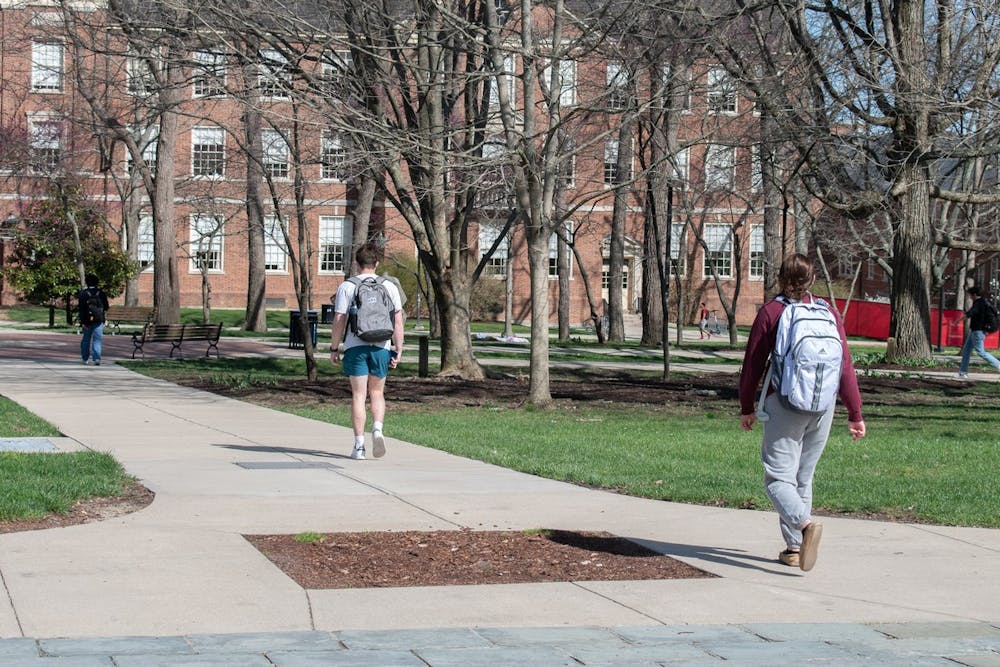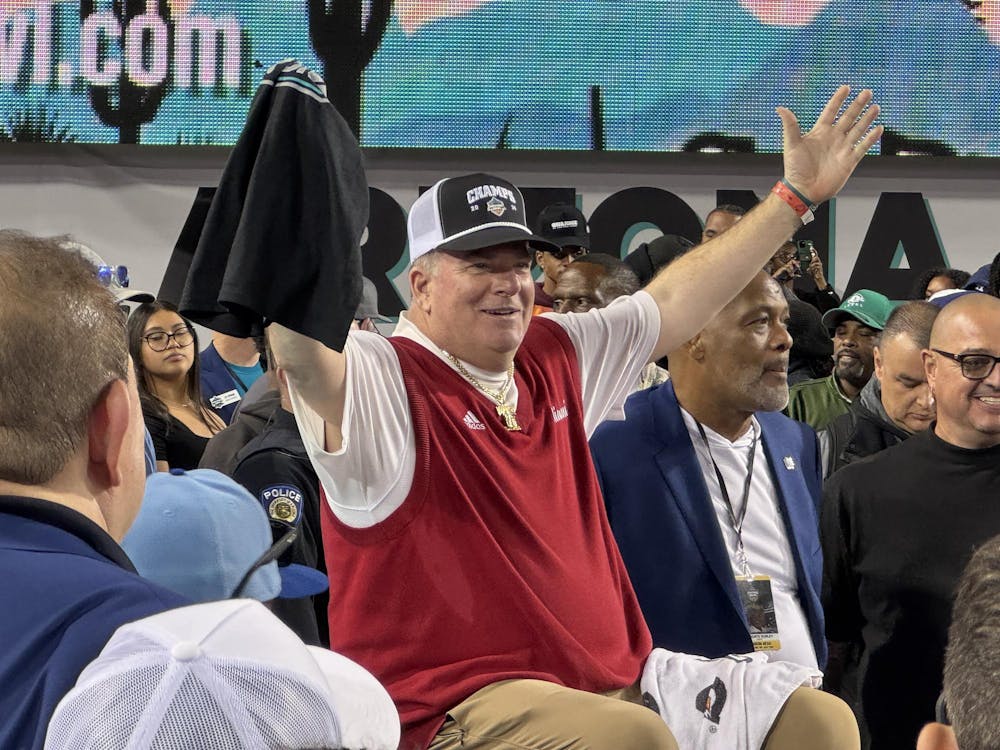For years, as people stood under Upham Arch, looking past the Seal out toward King Library, a tree blocked their view down the straight sidewalk. That tree, known as the Friendship Tree, was a black walnut tree that grew out of the sidewalk on the west side of Academic Quad.
When architects at Miami University were designing the layout of the campus, they wanted students to be able to stand at Upham Hall and see straight to King Library. However, they also wanted to keep the campus very natural and green.
When the tree sprouted out of the sidewalk and obstructed the perfect view, the architects faced a tough decision: keep it or chop it down.
They chose to keep it and named it the Friendship Tree. It soon became a staple of Miami for students like Hannah Lefkowitz.
“The tradition was that if you were walking with a group of friends and you split around the tree, so too would your friendship split,” Lefkowitz, a junior social work major, said. “So you see groups of people walking and pulling their friends over to the correct side of the tree to walk.”
Three weeks ago, Miami Physical Facilities decided to cut the tree down because it began to decay inside at its base. Cody Powell, associate vice president of Facilities Planning and Operations at Miami, wrote in an email to The Miami Student that the decision was not a sudden one, but it had to come down because it was becoming a hazard.
“We had been aware of the decay and worked with an arborist to determine the right time to remove the tree since it was in close proximity to both Stoddard and Elliott [halls],” Powell wrote.
Powell also wrote that the university is replacing steam lines with geothermal energy, and it was unlikely that the tree would have survived the transition.
“We all agreed that the disturbance [to] the tree would be too much for its fragile state,” Powell wrote.
Julia Fisher, a first-year nursing major, had never heard of the tree until it was torn down but felt that its removal wasn’t clearly communicated to the students.
“Even though I’ve never been there, [its removal] was definitely very weird and random,” Fisher said.
Hannah Lefkowitz, a junior social work major, agrees that because of the tradition tied to the tree, students should have been told about its removal.
Enjoy what you're reading?
Signup for our newsletter
“The culture of Miami is something that is very unique,” Lefkowitz said. “You’re not going to find any other student bodies that respect the traditions as much as Miami students, and to see one of the traditions just completely and literally ripped out of the ground without communicating it to the student body … it’s just really sad.”
Lefkowitz is a university tour guide, and as a part of their training, they learn about the tradition of the Friendship Tree to share with prospective students and their families. Lefkowitz said she always highlighted it on the tour because it emphasizes the importance of tradition at Miami.
“On the most recent tour that I did, I still mentioned the Friendship Tree even though it’s not there,” Lefkowitz said. “I still talk about it because it is a Miami tradition, and it helps to bolster the idea that we like to tell people how important tradition is to Miami.”
Will Bauer, a junior accountancy major, said he was first introduced to the Friendship Tree on his tour, but didn’t learn the tradition until he joined the Miami University Student Foundation (MUSF). Bauer, the co-executive chair of MUSF, said he was upset to see the tree cut down because of its history at Miami.
One of the pillars of MUSF is honoring traditions and legacy. Near Earth Day every year, MUSF holds Tree Fest to honor the Friendship Tree and celebrate friendship.
“This year we were going to do, before they removed the Tree, friendship bracelets, and we were going to have football and spikeball and music and just have a time for students to come with their friends and really embrace what the Friendship Tree really meant at its core,” Bauer said.
Bauer said MUSF was not told about the removal of the Tree, and they’ve decided to cancel Tree Fest this year, which was scheduled for April 15. MUSF does hope to reschedule and celebrate next year to honor the legacy of the Friendship Tree.
Powell acknowledged that the removal of the tree is upsetting but assured that Physical Facilities tries to plant one tree for every one they remove. Powell said they plan to plant another tree, but it might not be in the same location.
Although Fisher is happy the tree will be replanted, she said the location is a big part of the tree’s history.
“It’s like if they moved the seal,” Fisher said. “If they move the seal, it kind of defeats the whole purpose.”
Bauer said the location of the tree isn’t as important as the meaning behind the tradition.
“Even if it’s not going to go in that same exact spot, that’s not as important as memorializing the actual tradition itself of friendship,” Bauer said.
Although the tree is gone, Bauer said the meaning behind it isn’t and encourages students to honor its legacy by reflecting on its message.
“While yes, the tree isn’t there anymore, we can still keep that original intent of celebrating friendship and celebrating what it means to be a Miamian with current and future students.”




